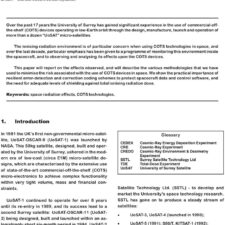Strategic Roadmap for the Development of an Interstellar Space Program
£5.00
M. Gifra; W. Peeters (2012), JBIS, 65, 341-353
Refcode: 2012.65.341
Keywords: Interstellar travel, Interstellar flight, Space exploration, Human spaceflight, Space program, Space economy, Starship, Manned mission, Earth sustainability, Extrasolar planet
Abstract:
Recent technological advances and scientific discoveries, particularly in astronomy and space technology, are opening our minds into the deepest realms of the universe, and also they are bringing a new era of space exploration and development. This sense of entering into a new era of space exploration is being boosted by the permanent discovery of new planets — to date, there are 684 confirmed extrasolar planets [1] — outside our solar system. The possibility that astronomers may soon find a habitable extrasolar planet near Earth and the recent advances in space propulsion that could reduce travel times have stimulated the space community to consider the development of an interstellar manned mission. But this scenario of entering into a new era of space development is ultimately contingent on the outcome of the actual world’s economic crisis. The current financial crisis, on top of recent national and sovereign debts problems, could have serious consequences for space exploration and development as the national budgets for space activities are to freeze [2].
This paper proposes a multi-decade space program for an interstellar manned mission. It designs a roadmap for the achievement of interstellar flight capability within a timeframe of 40 years, and also considers different scenarios where various technological and economical constraints are taken into account in order to know if such a space endeavour could be viable. It combines macro-level scenarios with a strategic roadmap to provide a framework for condensing all information in one map and timeframe, thus linking decision-making with plausible scenarios. The paper also explores the state of the art of space technologies 20 to 40 years in the future and its potential economic impact. It estimates the funding requirements, possible sources of funds, and the potential returns.
The Interstellar Space Program proposed in this paper has the potential to help solve the global crisis by bringing a new landscape of opportunities and challenges for the world as a whole. According to the first preliminary estimates, the total funding required would be of the order of US$1.2 trillion over a period of 40 years (NASA has spent a total of US$800 billion in today’s money in its entire 50-year history [3]), or an average of US$30 billion per year (which equals to one third of the current global government space spending [4]). Such an ambitious and long-term space program would create millions of jobs, and thus generate a real impact in the global economy.





